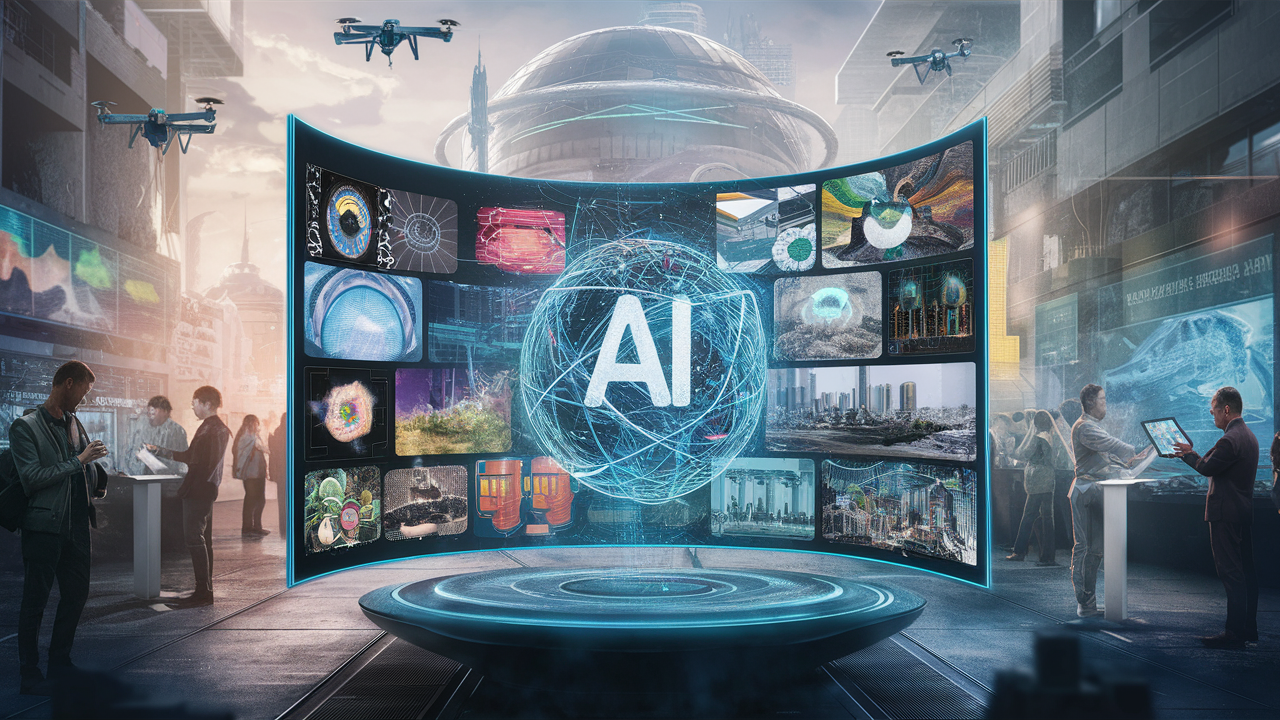 Generative AI: Applications and Future Trends
Generative AI: Applications and Future Trends
A branch of artificial intelligence called generative AI is concerned with developing systems that can produce literature, images, music, and other types of content. By automating creative processes and enabling new forms of expression, generative AI is transforming numerous sectors. It does this by utilizing transformer-based architectures like GPT and models like Generative Adversarial Networks (GANs). The main uses of generative AI are examined in this blog, along with potential developments.
Key Applications of Generative AI
-
- Production of Content
Text Generation: As a powerful tool for content generation, generative AI models like as GPT-4 may produce text that is similar to that of a person. They can compose creative literature in addition to articles, marketing copy, and dialogue for virtual assistants. These models are used by businesses to automate repetitive writing chores, freeing up human authors to concentrate on more intricate and imaginative work.
Realistic Image and Video Generation: Generating realistic images and films with GANs has advanced significantly. Applications include everything from the production of visual material for marketing and entertainment to the generation of artificial training data for machine learning models. AI-generated videos, for instance, can improve the creation of multimedia material, while AI-generated art can be utilized in advertising campaigns.
Composition of Music: The field of music is also noticing the effects of generative AI. With the ability to create creative music, AI models offer producers and musicians a new tool. These models can help with background music for movies, original sound effects for video games, or even album production.
-
- Tailored encounters
Customized Advice: Using generative AI improves online businesses’ personalization. Artificial Intelligence (AI) can provide tailored suggestions for goods, information, and services by examining user data. This application is widely used in social networking, streaming services, and e-commerce, where user satisfaction and engagement are fueled by individualized experiences.
Customizable Virtual Characters and Avatars: Generative AI can produce virtual characters and avatars that can be customized and react dynamically to user interactions in games and virtual worlds. This technology makes virtual surroundings more realistic and individualized, which improves the user experience.
-
- Medical Care and Drug Development
Medical Imaging: By producing high-quality images from lower-quality inputs, generative AI enhances medical imaging methods. By facilitating early disease identification and detection, this application improves the effectiveness and accessibility of medical imaging.
Medication Discovery: Generative AI models are used in pharmaceuticals to forecast molecular structures and produce possible medication candidates. This shortens the time and expense needed to create new drugs by speeding up the drug discovery process.
Future Trends in Generative AI
-
- Responsible and Ethical AI
Ethical issues are becoming more and more crucial as generative AI proliferates. Future developments in AI systems will probably center on creating accountable, transparent, and equitable systems. A major area of effort will be making sure AI-generated content is used morally and doesn’t reinforce prejudices.
- Better AI-Human Cooperation
The improvement of human-AI cooperation is the key to the future of generative AI. AI will enhance human ingenuity rather than replace it. More advanced tools will help musicians, writers, and artists in their creative processes, allowing humans and AI to work together seamlessly.
- Superior Natural Language Processing
Natural language comprehension will continue to be improved in generative AI models. More complex and contextually aware AI-generated content will result from this. Advances in natural language processing will benefit chatbots, virtual assistants, and automated customer support, among other applications.
- Generation Across Modes
Upcoming generative AI systems will be highly skilled at producing cross-modal content, or media that blends several different forms of expression. For instance, AI might take a written script and turn it into a short film with pictures, music, and video. Multimedia experiences that are more immersive and well-integrated will result from this trend.
- Enhanced Availability
A larger audience will have greater access to generative AI. Without requiring in-depth technical knowledge, consumers and small organizations will be able to use AI for content creation, personalization, and other applications thanks to user-friendly interfaces and tools.
Conclusion
Content creation and interaction are changing as a result of generative AI. Applications for it are found in many different areas, including personalization and content production, healthcare, and medication development. Future developments in technology will center on issues of ethics, enhanced human-AI cooperation, sophisticated natural language processing, cross-modal generation, and accessibility. By embracing these trends, generative AI will reach its full potential and open the door to novel and revolutionary experiences.
 Generative AI: Applications and Future Trends
Generative AI: Applications and Future Trends